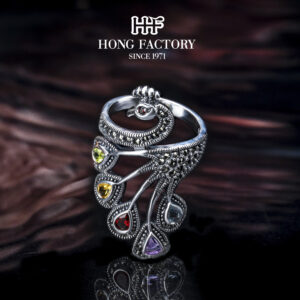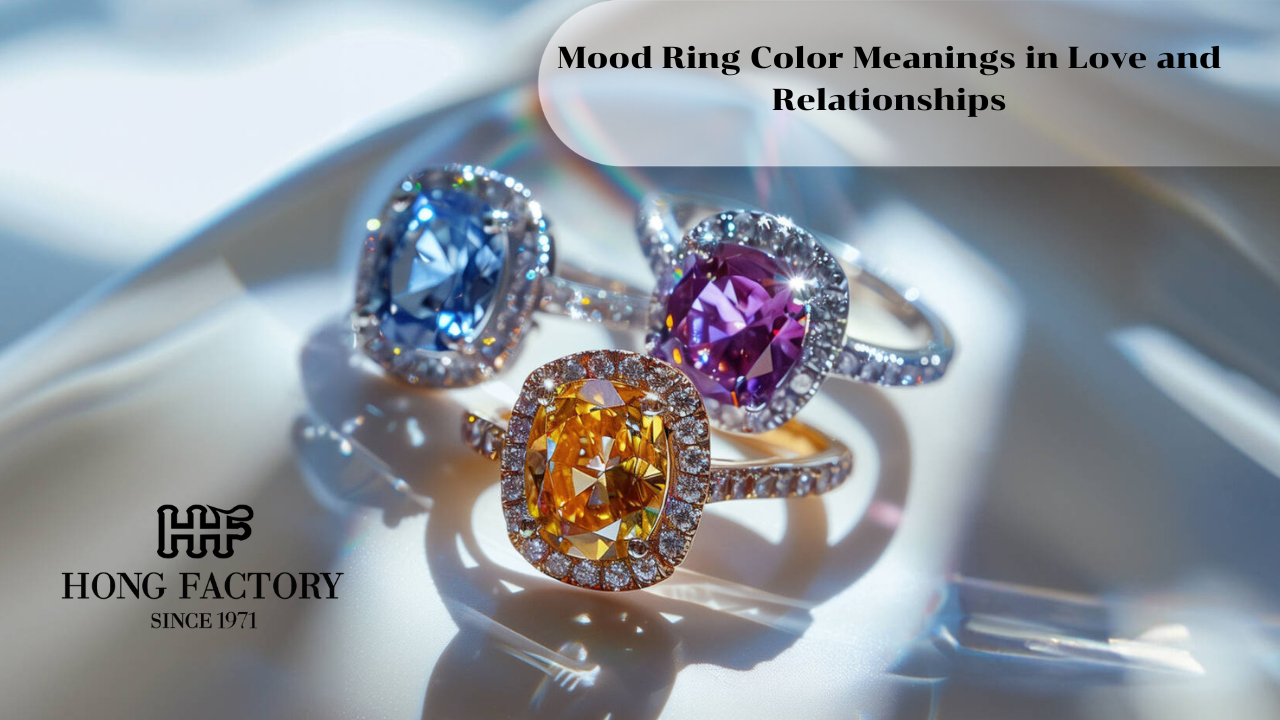Mood rings are more than just colorful accessories — they can be a fascinating reflection of how emotions shift, especially in love and relationships. Each hue tells a story about your feelings, from calm affection to passionate connection. By observing these color changes, you can gain insight into the emotional dynamics between you and your partner. Is sterling silver real
The Science Behind Mood Rings

Mood rings contain thermochromic liquid crystals that change color based on temperature. Since body temperature often shifts with emotions, the ring becomes a visual representation of your current state of mind. For example, when you’re relaxed or feeling affectionate, your skin is warmer, producing colors like pink or blue. When tension rises or emotions run high, the color might shift toward red, brown, or black.
In the context of love, these subtle changes can reflect everything from comfort and security to passion and excitement.
Mood Ring Color Meanings: What Colors Say About Love and Emotions
Understanding Mood Ring Color Meanings in relationships helps you interpret emotional patterns — both your own and your partner’s. Each shade reveals something different about affection, connection, or the balance between two people.
- Blue – Calm, Trust, and Emotional Stability
When your mood ring turns blue, it indicates peace and trust. In love, blue represents a steady relationship built on mutual understanding. It’s a sign that you feel safe, emotionally balanced, and content in your connection.
- Green – Balance and Growth Together
Green symbolizes harmony, renewal, and emotional balance. In relationships, this means both partners are on the same wavelength, supporting each other’s growth. A green hue suggests open communication and a sense of equality in love.
- Purple – Romantic Mystery and Intimacy
Purple reflects depth, imagination, and a touch of mystery. When your ring shows purple, it often means you’re emotionally and spiritually connected with your partner. It’s the color of soulful love — passion mixed with admiration.
- Red – Passion and Desire
Red is the color of physical attraction and excitement. It appears when emotions are strong — whether it’s romantic passion, enthusiasm, or even tension. In love, red represents the fire that fuels your connection, the spark that keeps relationships vibrant.
- Pink – Affection, Tenderness, and Comfort
Pink shows gentle love and emotional warmth. When your ring turns pink, it’s a sign of affection and closeness. It means you feel loved, supported, and emotionally safe — often seen in moments of tenderness or heartfelt conversation.
- Yellow – Flirtation or Nervous Energy
Yellow suggests excitement mixed with curiosity or uncertainty. In relationships, it may mean butterflies — that thrilling but nervous energy you feel when romance is new or unpredictable. It can also signal anticipation before expressing deeper feelings.
- Brown – Confusion or Emotional Transition
Brown often represents uncertainty or mixed emotions. If your ring turns brown, it may reflect moments of doubt or miscommunication. In love, it’s a reminder to slow down, reflect, and seek clarity through honest conversation.
- Black – Intense Emotion or Emotional Distance
Black can indicate strong emotions like jealousy, sadness, or frustration — but it can also suggest emotional withdrawal. If your ring darkens, it’s worth checking in with yourself or your partner to restore warmth and understanding.
Each of these shades can appear in different stages of a relationship — from early attraction to deep commitment — serving as an emotional mirror to your romantic energy.
The Emotional Spectrum of Love

Love is rarely one color. It shifts constantly, just like a mood ring. Some days, your emotions radiate with passion and excitement (red or pink); other days, you may crave calm and comfort (blue or green). This fluidity reflects how relationships evolve — a mix of high energy, peace, and reflection.
Mood rings remind us that love isn’t static. It’s a living, breathing emotion that moves through many shades of feeling.
How to Use Mood Rings to Deepen Connection
A mood ring can be a fun and symbolic way to practice emotional awareness with your partner. Here’s how:
- Notice Patterns: Track when certain colors appear during conversations or shared moments. Do bright colors appear when you laugh together? Do darker hues show up during stress?
- Discuss Feelings: Use color changes as conversation starters about how you both feel.
- Reflect Together: Let the ring serve as a mindfulness tool — a visual reminder to check in with each other.
While not scientifically precise, mood rings can spark meaningful emotional understanding in relationships.
Caring for Your Mood Ring
To preserve its sensitivity and shine:
- Avoid contact with water, heat, or chemicals.
- Clean gently with a soft cloth.
- Store in a cool, dry place.
- Remove it when sleeping or exercising.
Proper care ensures your ring continues to respond beautifully to your emotions.
The Symbolism of Mood Rings in Modern Love
In today’s world, where relationships can feel rushed or distracted, mood rings bring back a sense of mindfulness and connection. They serve as tiny emotional mirrors, reminding you to be aware of how you and your partner feel. Whether it’s the serenity of blue, the fire of red, or the comfort of pink, each hue deepens your understanding of love’s many expressions.
The Mood Ring Color Meanings reveal how love is expressed through emotion — from the soft warmth of affection to the bold intensity of passion. When your ring changes color, it’s not just reacting to temperature; it’s echoing the heartbeat of your relationship.
So, when your ring glows, take a moment to notice what it’s saying. Every color tells a story of love — sometimes calm, sometimes fiery, but always meaningful.
